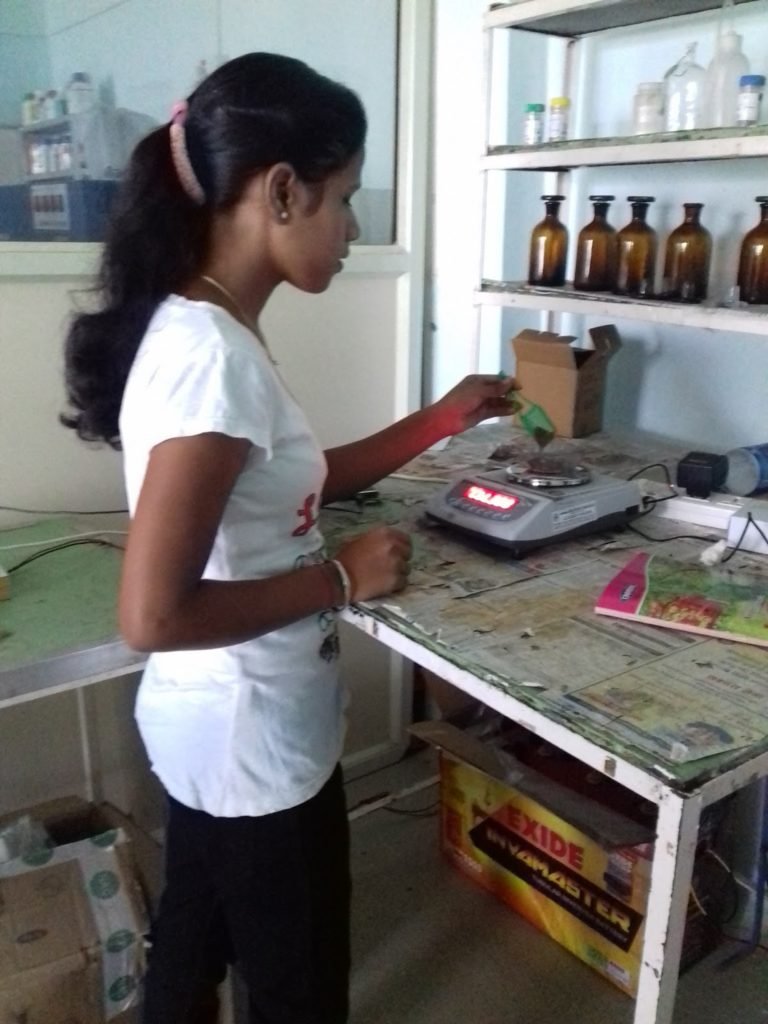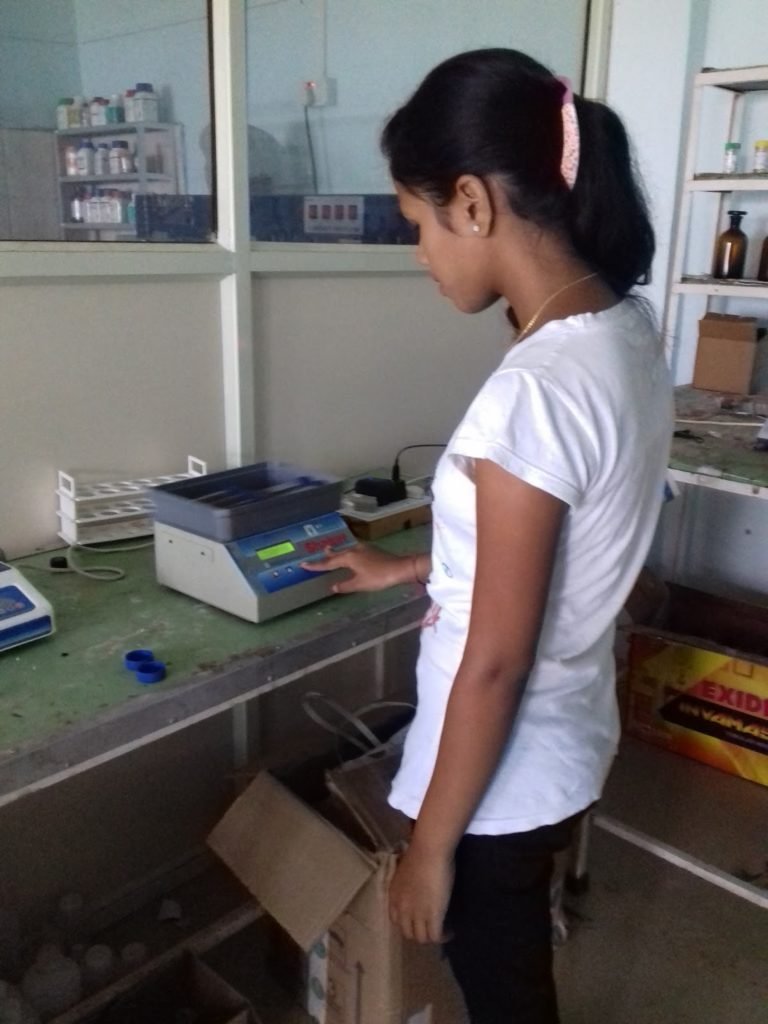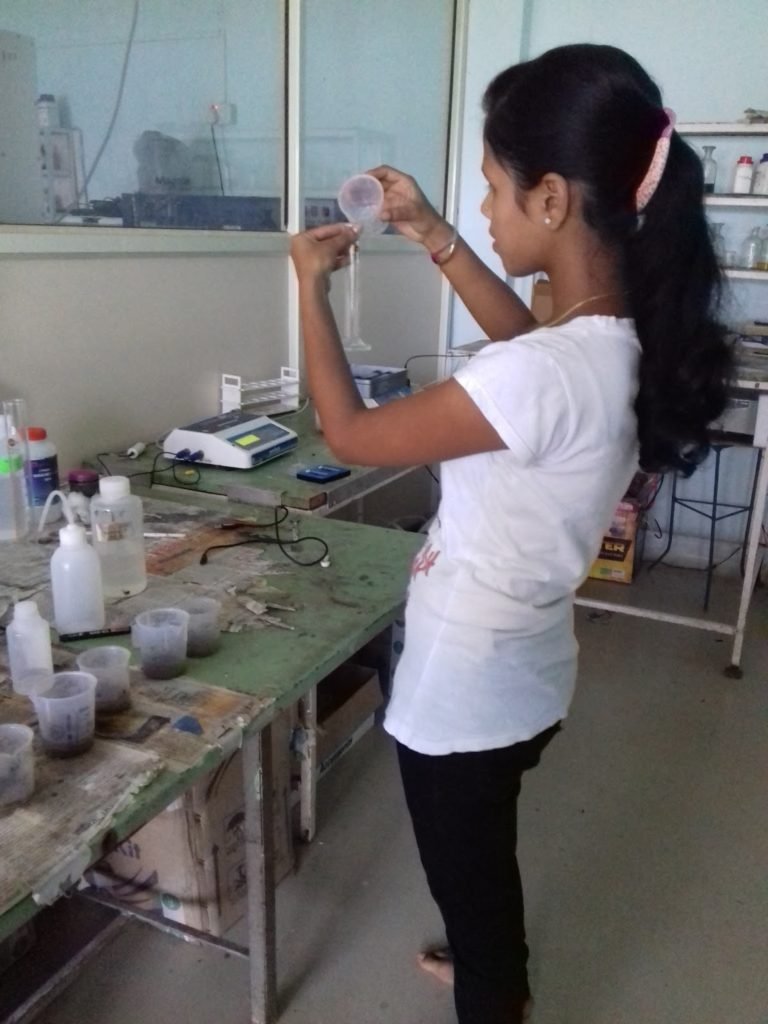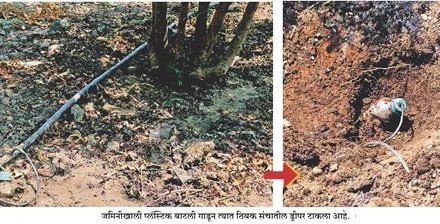On 18th june we started working on new assignment that was soil testing. As my friend vishakha was already work in soil testing lab she introduced us all the instrument and reagent in lab. She introduced us a Mridaparikshak.Previously for testing Prerana kit was used but now a days Mridaparikshak is use.In Mridaparikshakt consist of heating plate,shaker. Mridaparikshak is soil analysis kit which help in determing pH,EC,OC,nitrogen,phosphrus,iron,
zinc,potassium,boron,sulphur.After that we started for soil testing. We distributed the test inbetween us.I performed the test of sulphur and potassium in soil.We take 10 samples of soil.After taking sample we sieve it and followed the procedure as given in manual. The material used for test is as followsMaterial used:
1.Mrifdaparikshak
2.Weighing balance
3.Test tube
4.Filter paper
5.Sieve
6.Funnel
7.Syringe
8.Beaker
9.Reagent bottles
10.Measuring flask
In manual separate procedure is given for determining pH, OC, EC,N, S, P, K, Zn, Fe, B.We followed that procedure and concluded a result.From that result farmer get the actual idea about nutrient content in his soil.After testing we were determine a result which is as follows
Farmer name:Nutrient content:
1.pH= 8.87
2.EC= 0.87
3.OC= 0.96
4.N= 198
5.Br=2.98
6.K=125. 6kg/ha
7.Fe=1.88
8.S= 80.8Mg/kg
9.Zn= 2.96
10.P= 34.85
As we got the result we conclude which nutrient have deficiency in soil and from this data we can also suggest the farmer how to increase the deficient nutrient.Suppose in soil potassium content is less then we can suggest the farmer why the potassium content is less and it will be increase as follows
Reason for deficiency of potassium
When we have low pH soil, we have low cation exchange capacity(CEC-the degree to which a particular soil can absorb and exchange cations), then that’s associated with low K and that’s sandy soil,potassium can leach out
due to precipitation or irrigation.
These soils are commonly deficient in potassium.
How to increase potassium
1.Add compost with fruit and vegetable waste.Compost is rich in nutrient
2.Bury citrus rinds directly in the soil.
3.Mix wood ash into the soil.
4.Use greensand.









![Drying Pudina [Mint]](https://vadic.vigyanashram.blog/wp-content/uploads/2019/06/wp_20170129_16_50_45_pro-440x264.jpg)